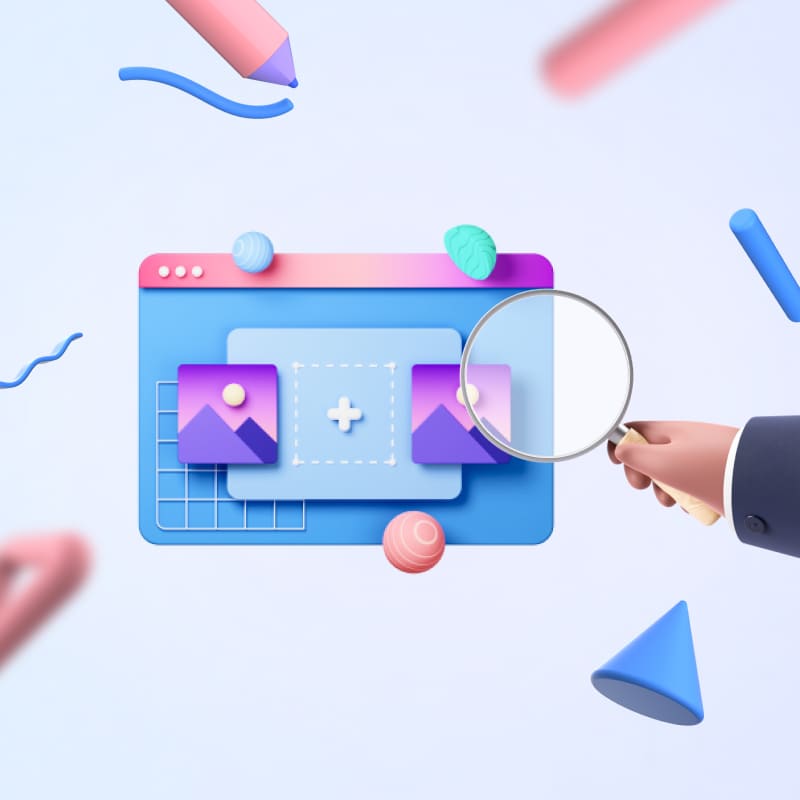
Designing your eLearning programme may seem like the most exciting part of setting up your LMS system. Our survey amongst L&D professionals found most corporate skills programmes were developed in-house, whilst half of the respondents outsourced content development.
Knowing what courses you want to host might make everything easy, but much more is involved. For one, you need to decide whether to go with off-the-shelf content or create custom content.
Contents
- What is custom training content?
- What is off-the-shelf training content?
- What are the key differences between an off-the-shelf and a custom Learning Management System?
- Access
- Features
- Budget
- Licensing & Rights
- Branding
- Do your learners need custom or off-the-shelf training content?
- Custom eLearning vs off-the-shelf eLearning
- How to choose the right type of eLearning content for you
What is custom training content?
Creating your training content gives you the flexibility to create courses customised in a way it suits you. It gives organisations more control over the training programme’s goals, direction, and appearance with the content you put together. This way, it covers the scope you want, your brand identity, and features like colour, font, and tone of voice. It is original, owned by the organisation, and curated in the forms you decide are suitable.
This will take time to put together because it is being developed from scratch and has to be integrated into the system.
What is off-the-shelf training content?
Off-the-shelf items are convenient for a quick “grab and go”. And the same applies to eLearning as your LMS solutions provider or another vendor can provide training content which can be easily used.
They usually cover introductory topics, exceptionally soft skills and general topics that apply to a broader audience. This option is more suitable for organisations that want to provide basic training to their employees.
What are the key differences between an off-the-shelf and a custom Learning Management System?
With custom training and off-the-shelf, the training content is hosted on the LMS and available to your learners on demand. However, there are stark differences between these two types of content.
The pros and cons depend on other factors that are key to you.
Access
First, you must know that off-the-shelf is licenced access to training content and restrictions are based on your subscription. This is relatively alright if you are a small firm without the resources to develop your content and with limited staff.
However, when you are a large organisation, such restrictions limit your access in terms of numbers. As your training programme grows, you would spend more to increase access by more people.
In the case of customised courses, once you have gone through the process of developing your content, you are free to use and give access to as many learners as you would like.
Features
Basic standardised features you expect to find on any LMS include the content and assessments you should see in off-the-shelf training content.
Customised training content, however, can be more intricate, detailed and aesthetically appealing. The flexibility to make it what you want is yours once you opt for customised training content.
Such things as integration with third-party plugins and your brand identity are akin to customised training content. Your focus, objectives and budget will determine the extent of your customisation.
Budget
Yes, budget certainly has a lot to do with your choice. Off-the-shelf training materials can be standardised so they can be affordable. They may have no frills but have all the bone, i.e., core essentials of the topics you want to have in your training programme and be simple and straight, but your cost will go up in the number of features and users that you subscribe for.
The more features and aesthetics you go for with customised training programmes, the higher your spending will be.
Licensing & Rights
Your customised training content is all yours, and you own copyrights to it.
However, with the off-the-shelf, you have access as long as and, per user to the extent of your subscription. Essentially, the content is never yours with the off-the-shelf training content.
Branding
The inability to brand off-the-shelf content is a crucial factor that may make it undesirable, although some LMSs, like My Learning Hub, offer a white-labelling functionality that can automatically integrate your core visual elements into the content.
If your organisation is big on branding and cohesion of its assets, you may have to go for customised training content, so your brand tone, voice, colours and other identity features are incorporated into the content.
If branding is not a priority to you when training is concerned, and you are focused on the content itself, the off-the-shelf just might work for you.
Do your learners need custom or off-the-shelf training content?
Overall, each type of training content has its merits, and your decision will depend on your preferences and the status of your organisation.
Do you have a full team of content developers on your learning and development team? Can you afford a subscription for professionally provided off-the-shelf content, or do you have the number of users to justify such an expenditure? Above all, are you going for an open source LMS or for a closed source LMS?
Custom eLearning vs off-the-shelf eLearning
Here are the types of training content pitted against each other.
How to choose the right type of eLearning content for you
None of these is better than the other because every organisation has unique needs, circumstances, objectives and resources. The decision on which training content strategy to adopt is wholly dependent on these factors, which should be considered in context.
Off-the-shelf training content may provide you with standardised material that aligns with industry practice, regulations and compliance criteria. These ready-made courses are versatile because they are more general and applicable to a wider market.
Custom training content, on the other hand, is made-to-fit and will address specific needs and objectives of your organisation. It is more affordable eventually because you can keep reusing without restrictions.
If you are still unable to decide which type of training content is most suitable for your organisation, there is no need to fret.
Book a demo session with My Learning Hub today and get the advice of experts who can help you with this decision.
Frequently asked questions FAQ














